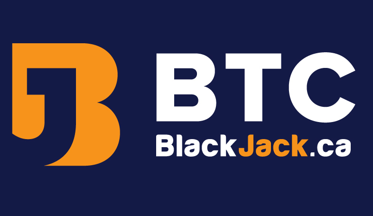What are Non Fungible Tokens (NFTs) and Exchange Traded Funds (ETF), and what do they have in Common?

ETF and NFT – These two abbreviations are largely associated with crypto currency, so much so that novices tend to think they’re opposite sides of the same coin. That’s not the case at all. In fact, they have very little in common, except for their oft-misunderstood association with digital tokens. Being among the most searched-for definitions by new Bitcoin users, we’ve decided to explain them together.
We’ll start with a quick definition of each, then delve deeper into why they exist in the first place, and how they might benefit you.
ETF – Exchange Traded Fund
An ETF is a single investment fund, made up of multiple commodities, that can be traded on a stock exchange.
NFT – Non Fungible Token
An NFT is a type of cryptographic asset in which each token has a unique identification code and metadata that distinguishes it from all other tokens of its kind on a blockchain.
Investing in Crypto Exchange Traded Funds
Investing in an ETF is like investing in a series of commodities all at once. Thus, investing in crypto ETFs is investing in a series of digital assets. Instead of buying a set amount of each crypto individually, you’re able to invest in an entire portfolio of hand-picked crypto. The only difference is that it’s not your hand that doing the picking. A group of expert brokers choose the assets they believe to have the most potential for increasing in value. It’s a guessing game, for sure, but for some investors, knowing that the guesses are being made by trained professionals makes them feel a lot more comfortable with it.
Investors began dealing in ETFs for traditional commodities long before the first Bitcoin came into existence. In the early days of crypto currency, it didn’t make since to combine coins into an ETF. There simply weren’t enough of them. Even after the market exploded with hundreds of new altcoins in 2014-15, the concept of a crypto ETF was implausible, largely because no securities exchange authority was willing to approve an ETF registration for decentralized (unregulated) commodities.
Canada’s first Bitcoin ETF (the world’s first Bitcoin ETF, for that matter) was listed on the Toronto Stock Exchange in February 2021. Launched by Purpose Investments, the Purpose Bitcoin ETF (BTCC) grew to more than CA$1 billion in assets in its first month. By December, the portfolio was worth CA$1.8 billion. Needless to say, a bevy of Canadian crypto ETFs have surfaced since the launch of BTCC.
Please note that investing in an ETF, crypto-based or otherwise, does not guarantee a profit. Smart investments have better odds, just like smart decisions in blackjack, but there is always a chance you could lose money.
Non Fungible Tokens – Uniquely Identifiable Digital Currency
An NFT is a non-fungible digital token. That’s a funny word – fungible. Makes me think of mushrooms, which I love. Especially deep fried, with a little… oh, sorry. I got side tracked there. Fungibility has nothing to do with fungi. According to Investopedia:
“Fungibility is the ability of a good or asset to be interchanged with other individual goods or assets of the same type.”
So fungibility relates things where each object or instance is identical, like a grain of salt, a napkin, or mugs in a matching set. A fungible token would be a crypto coin developed so that each token is perfectly identical to the next.
If a fungible token cannot be uniquely identified, then a non-fungible token (NFT) is one in which each token has its own unique, distinguishing marks. Each and every NFT contains unique metadata within its code.
Think of metadata as the serial numbers that appear on a Canadian bill. All bills look the same, but they can be identified by their unique serial numbers. An NFTs metadata is recorded on the blockchain each time the token is moved from one wallet to the next. So that exact coin can be traced through every wallet it was ever in, right back to the moment it was mined or minted.
Why Does Fungibility Matter?
It matters because the traceability of NFTs can be very useful. Then again, so can fungible (non-tracable) tokens, like Monero (XMR) and Verge (XVG). Only fungible tokens can be 100% anonymous. That’s not to say that all fungible crypto are 100% anonymous, but they’re the only ones that can be.
Then again, only non-fungible (identifiable) tokens can be 100% verifiably secure. Most NFTs run on the Ethereum Blockchain, which facilitates transactions through impregnable smart contracts. They are less commonly used to buy illegal goods, as well. NFTs that have been used for illegal purposes can become tainted; marked for duplicitous means, similar to cash money being inked in a bank robbery. Once tainted, that mark follows the token forever, and could result in the coin being rejected for future purchases.
NFTs and ETFs Aren’t Just for Crypto
For the record, an NFT doesn’t have to be a crypto currency, just as an ETF doesn’t have to contain digital assets. An NFT to can apply to anything digital, really. It is simply a way of labeling something digital with a unique identifying mark.
Some of you surely heard about (and probably scratched your head over) Twitter founder Jack Dorsey selling an autographed Tweet as an NFT. That tweet was the very first tweet ever to be tweeted, and because it was able to be uniquely identified via NFT (i.e. autographed), it sold for an astounding US$2.9 million.
Go ahead and roll your eyes. It really is just as stupid as it sounds. But are we really surprised by a conceited billionaire finding a way to extend his fortune by selling his own autograph? He wasn’t the first to make a ludicrous amount of money selling an NFT, and he won’t be the last.
